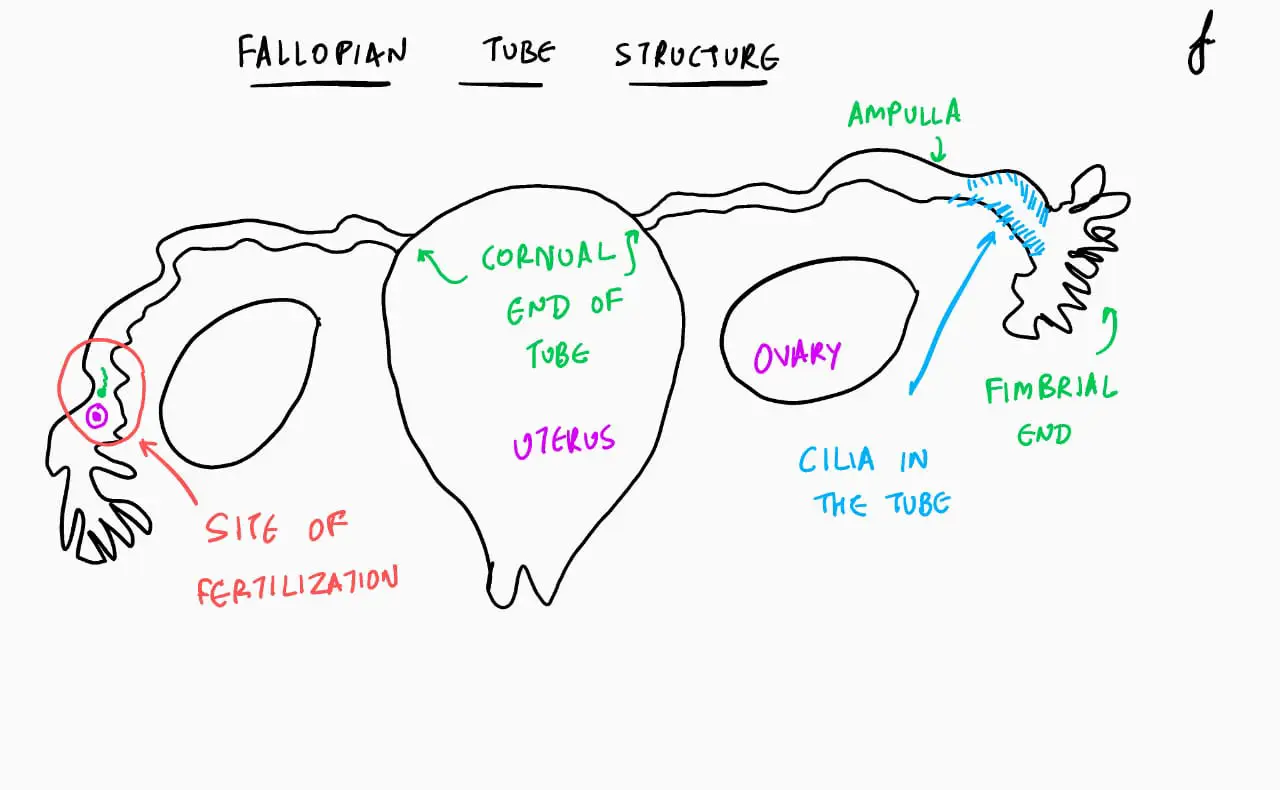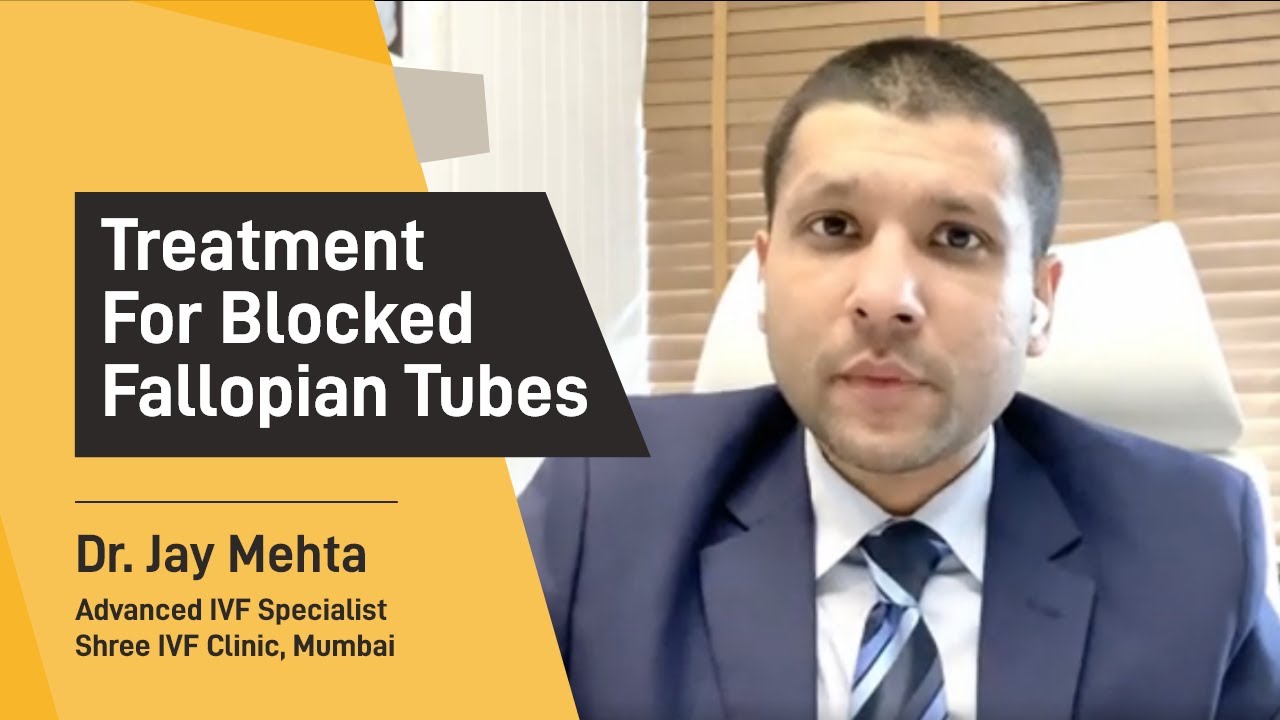Blocked Fallopian Tube Treatment

What is the fallopian tube & its part?
Fallopian Tubes, basically, if one has to simply understand, are a pipeline that connects the Ovary and the abdominal cavity, also called the Peritoneum to the Uterus.
Fallopian Tubes are typically 10-12 cms in length and consist of a fimbrial end, which is close to the ovary; then comes the ampulla, which is a broad portion of the tube, followed by the mid-tubal region and finally ending in the cornua, which is the connection of the tube to the uterus.
Each of these parts is unique to the fallopian tube as they carry out unique functions.
Understanding the Role of Fallopian Tubes in Natural Conception
1. The Importance of Fallopian Tubes in Fertility
The Fallopian tubes are vital for natural conception. They act as pathways for sperm to reach the egg and are where fertilization occurs. If blocked or damaged, pregnancy becomes difficult.
2. The Fimbrial End: Capturing the Egg
The fimbriated end of the fallopian tubes plays a crucial role in capturing the egg released during ovulation. It contains cilia, small hair-like structures that push the egg towards the inside of the tube. During a diagnostic hysteroscopy and laparoscopy for fertility assessment, doctors closely examine the microstructure of this part of the fallopian tubes, a process known as “salpingoscopy.” This requires specialized instruments to assess the internal structure of the fallopian tubes.
3. The Ampulla: The Site of Fertilization
The next part, the ampulla, is where fertilization actually takes place. The egg remains viable for fertilization for about 12 hours following ovulation. If natural intercourse or IUI occurs during this window, there is typically a good concentration of sperm inside the fallopian tubes, allowing for successful fertilization. In contrast, sperm can survive in the female reproductive system for around 48 to 72 hours.
4. The Journey of the Embryo Through the Fallopian Tube
Once fertilization occurs, the embryo begins its slow journey towards the uterus, taking approximately five days to travel just 7–8 cm. During this time, the fallopian tubes secrete a fluid known as Human Tubal Fluid (HTF), which nourishes the embryo, supports cell division, and helps the embryo grow from a fertilized egg to a 120-cell Day 5 blastocyst. Interestingly, most commercial IVF media are designed to mimic this HTF.
5. The Cornua: Final Step Before Implantation
The final and narrowest part of the fallopian tube is called the Cornua. At this stage, the fertilized Day 5 embryo, or blastocyst, moves from the fallopian tube into the uterus, where implantation takes place.
Schedule an Appointment for Fallopian Tube Blockage Treatment in Mumbai
Call Us 24/7
1800-268-4000
What Tests Check for Blocked Fallopian Tubes?
1. Traditional Method: HSG (Hysterosalpingography)
Fallopian tubes are to be assessed in every patient who is planning for conception. The traditional method of assessment is by performing a procedure called HSG (Hysterosalpingography). This involves pushing a medical dye inside the uterus and observing its passage through the uterus via an X-ray. The X-ray plate is then analyzed by a doctor to visually assess the spill.
– Challenges with HSG
One of the primary issues with HSG is the pain it causes. As a result, the very idea of HSG or tubal ligation makes many women uncomfortable, leading them to avoid the procedure. Furthermore, fertility-related support groups often discuss HSG, sometimes sharing information that may be correct or incorrect, increasing anxiety among couples.
2. The Modern Alternative: Saline Sonosalpingography (SSG)
These days, HSG is considered outdated and has been replaced by Saline Sonosalpingography (SSG).
– Why SSG is Better
One of the most common questions is whether SSG is also painful. The difference here is that in SSG, the dye itself is composed of a local anesthetic, making the procedure virtually painless. Women who undergo SSG generally feel much more comfortable compared to those who undergo HSG.
– Additional Benefits of SSG
SSG not only examines the fallopian tubes but also offers a 3D study of the tube and simultaneously evaluates the internal structure of the uterus. This comprehensive approach provides crucial information for assessing the female reproductive system. The illustration of the SSG procedure is presented in a photo for better understanding.
3. Fallopian Tubes: Their Role and Vulnerability
Fallopian tubes play a crucial role in fertility. Due to their connection to both the peritoneum and the uterus, they are at risk of becoming blocked, particularly in cases of infection.
– Common Causes of Tubal Blockage
Typically, tubal blockages result from silent infections. Among Indian women, common infections like Chlamydia and Gonorrhea often lead to tubal obstruction. Indian women are generally more susceptible to tubal blockages due to the high prevalence of endemic pelvic infections in the country.
Types of Fallopian Tube Blockages
Fallopian tube blockages are a common cause of infertility and are typically classified into three types:
- Cornual Blocks
- Mid-Tubal Blocks
- Fimbrial Blocks
1. Cornual Blocks: The Easiest to Treat
Among the three types, Cornual Blocks are the easiest to treat and have the best outcomes. The treatment involves a procedure called fallopian tube cannulation.
– Procedure and Success Rate
This delicate procedure requires precision and control to avoid perforating the tube. When performed by experts, it offers maximum benefits. After surgery, many patients with Cornual Blocks successfully achieve natural pregnancy.
2. Mid-Tubal Blocks: Complex to Treat
Mid-Tubal Blocks are more challenging as they do not respond well to laparoscopy. This is primarily due to intraluminal compromise, which results in very poor outcomes.
– Surgical Approach
Even with laparoscopy, the success rate is about 45% when performed by an expert. Mid-tubal blocks caused by adhesions and endometriosis require skilled surgical intervention to carefully reopen the tubes.
3. Fimbrial Blocks: Advanced Surgical Skill Required
Fimbrial Blocks are the most complex and demand a high level of surgical expertise. One of the most effective procedures for these blockages is Fimbrial Repositioning, which is performed in India by a few specialists like Dr. Jay Mehta.
– Success Rate
Dr. Jay Mehta is known for his surgical proficiency, offering high success rates in Fimbrial Block treatments. Book your consultation with Dr. Jay Mehta, the leading expert in infertility and blocked fallopian tube treatment in Mumbai, India!
Alternative Treatments for Fallopian Tube Blockages
- Antibiotic Therapy
After surgical procedures, patients are often prescribed antibiotics to prevent infection and aid in healing.
- Ayurvedic Treatments: Limited Success
Some patients opt for alternative therapies like Uttar Basti, an Ayurvedic treatment for blocked tubes. However, this therapy requires skilled preparation, multiple sessions, and the success rate remains suboptimal.
Debunking Myths: Diet and Exercise
Contrary to popular belief, there are no magic remedies like diet, exercise, or nutrition that can unblock fallopian tubes. Patients should be cautious of such emotional gimmicks and focus on proven medical treatments.
The Importance of Healthy Fallopian Tubes
A healthy fallopian tube is essential for fertility. Optimizing tubal health significantly increases the chances of conception. Consulting with a skilled expert like Dr. Jay Mehta can make a substantial difference in fertility outcomes.

Dr. Jay Mehta
MBBS, DNB – Obstetrics & Gynecology
IVF & Endometriosis Specialist, Laparoscopic Surgeon (Obs & Gyn)
Dr. Jay Mehta is a renowned IVF specialist and fertility-preserving surgeon in Mumbai, India. He is the Director of Shree IVF and Endometriosis Clinic, as well as the Director of Uterine Transplant in Global Hospitals, Mumbai. He is a leading laparoscopic gynecologist in India for endometriosis and adenomyosis..
He is a well-known Fertility and IVF Specialist and also among few doctors in the country who specializes in Embryology and Andrology. He operates India’s major cities including Mumbai, Pune, Chennai, Hyderabad, Bangalore, Ahmedabad, Agra, Delhi etc.
To book an appointment, call: 1800-268-4000 or fill out our contact form

Google Reviews

Sandhya Yadav

I got pregnant through ivf done by Dr Jay mehta, even though my husband had azoospermia with my own eggs and his sperm. NO DONOR PROGRAM done. I am 5 months pregnant and even the pregnancy progress and checkups are great… Best IVF and PREGNANCY hospital in India… Dr Jay is a magician

Vikas Maurya

We concieved with Dr Jay Mehta with his superlative natural medications and therapy. He micromanages the cases. We have spent 6 years with other speciliasts.
With due respect, dr jay mehta is the best fertility expert in mumbai city. He is very honest to patients. He gives everything in writing. He gives very frank hopes. He is possitive in attitude which helps patients.
He also give concession to us considering the financial problems due to virus pandemic. I cannot imagine to have met such a doctor, who doesnt think of money at all. I dont know about all doctors as i have had some bad experiences, but dr Jay Mehta is definitely next to GOD. He gets results out of absolute honesty and for anyone trying for infertility, he is a must meet person.

Shefali Parekh

Dr Jay Mehta is an excellent IVF specialist. He and his wonderful team are responsible for excellent results here. The great thing is that Dr Jay does the egg pick up and embryo transfer himself for all patients. They are very good with the financial counselling of the procedure. The cost will almost never escalate. We are very happy with the services of the premises.

Swadha Kotpalliwar

Dr Jay is definitely one of the finest laparoscopic surgeon and ivf specialist. His surgeries are a treat for many many Gynecologist to watch. Kind by heart and his teachings are valuable , one can’t afford to miss !!
Blogs

7 Steps to getting pregnant with blocked fallopian tubes
Latest technologies are often embraced by couples who are facing fertility issues. They are always ready to pursue new inventions even if they have little hope for any positive outcome.
Video

Blocked Fallopian Tubes Causes and Treatment
The fallopian blockage which is spasmodic or due to anxiety is the easiest to treat. Apart from this, there are various other causes of the blocked fallopian tube. The causes which are extremely difficult to treat are the causes due to infections because predominately they cause mid-tubal or distal tubal blockages.

